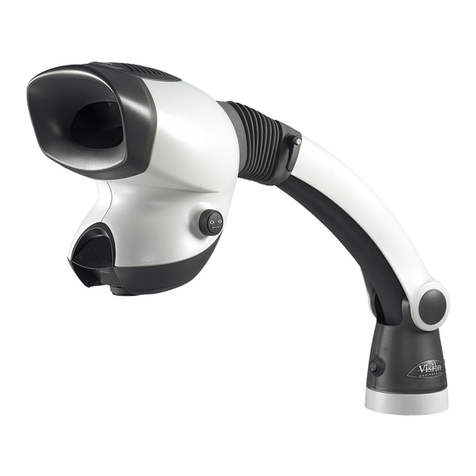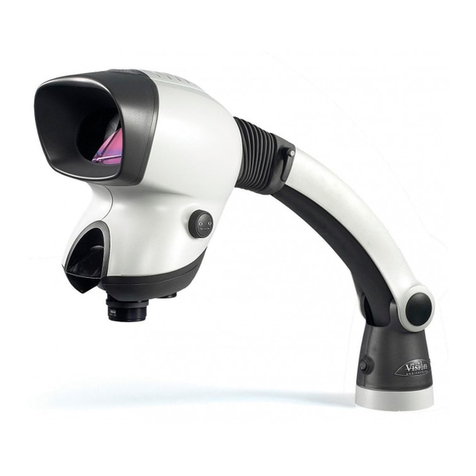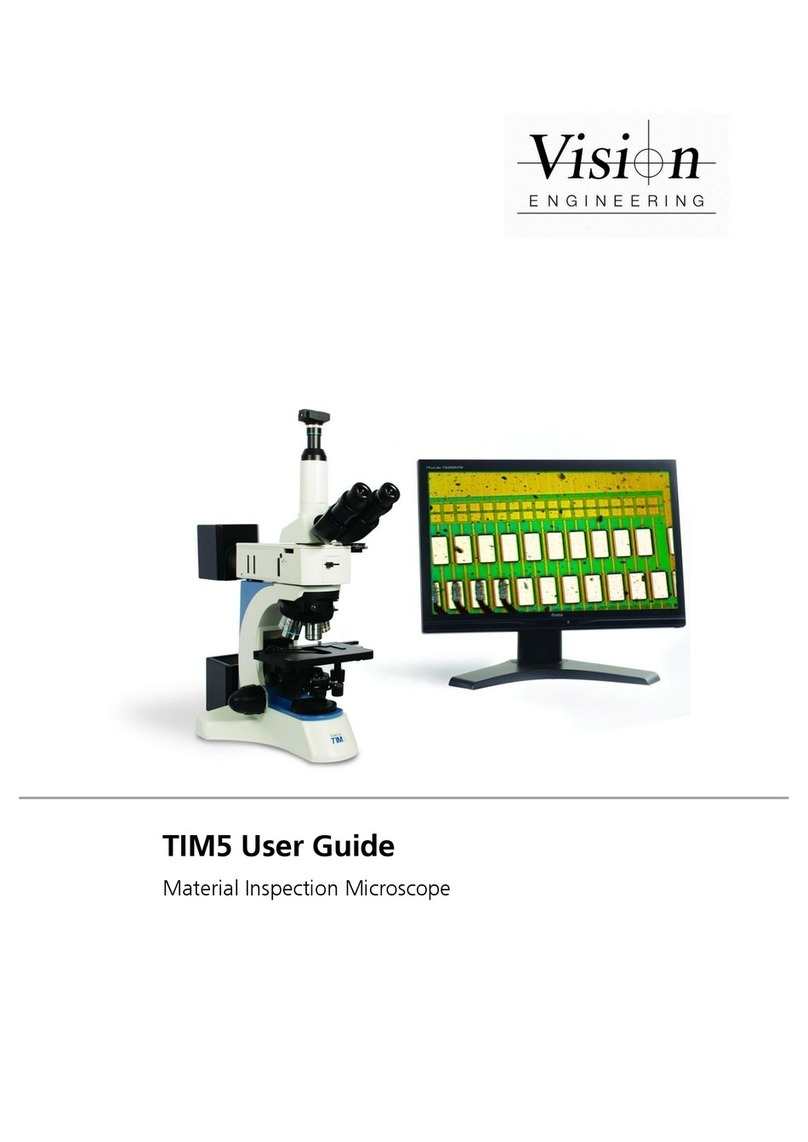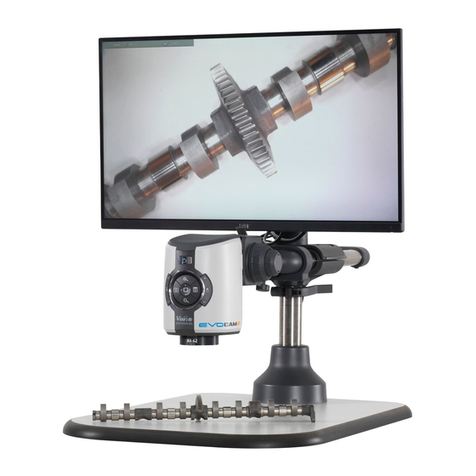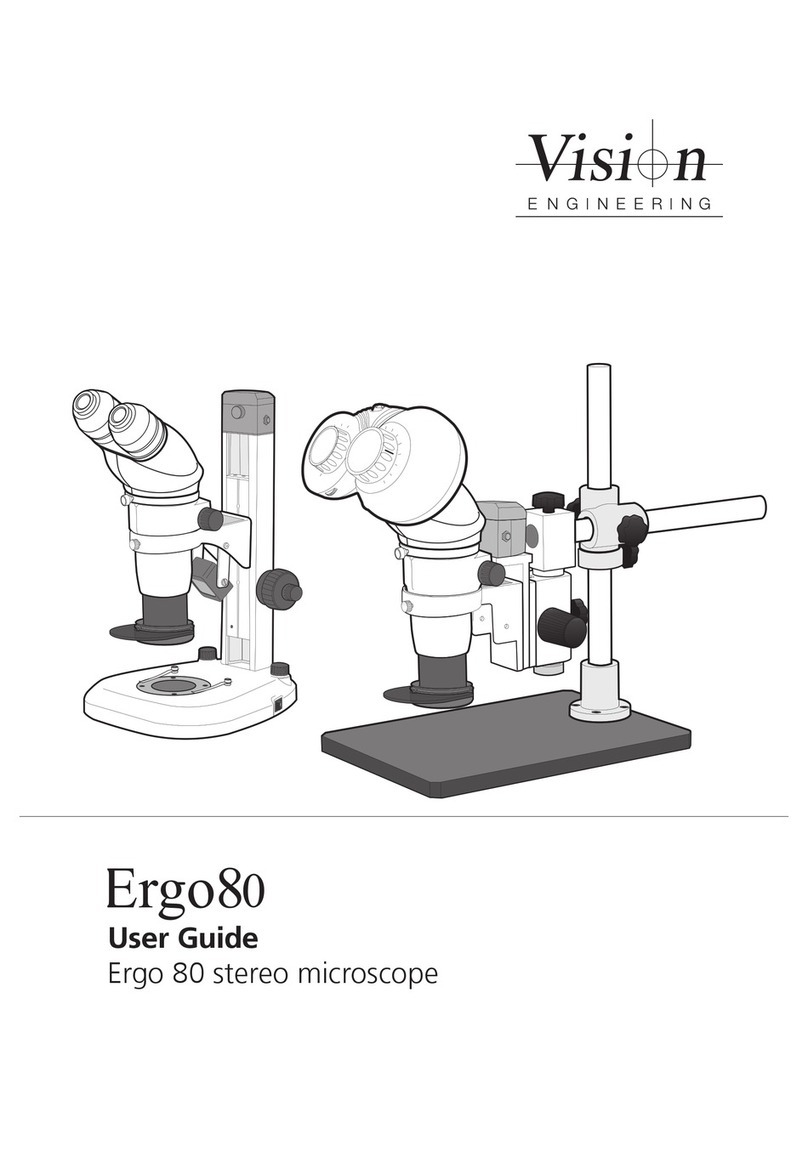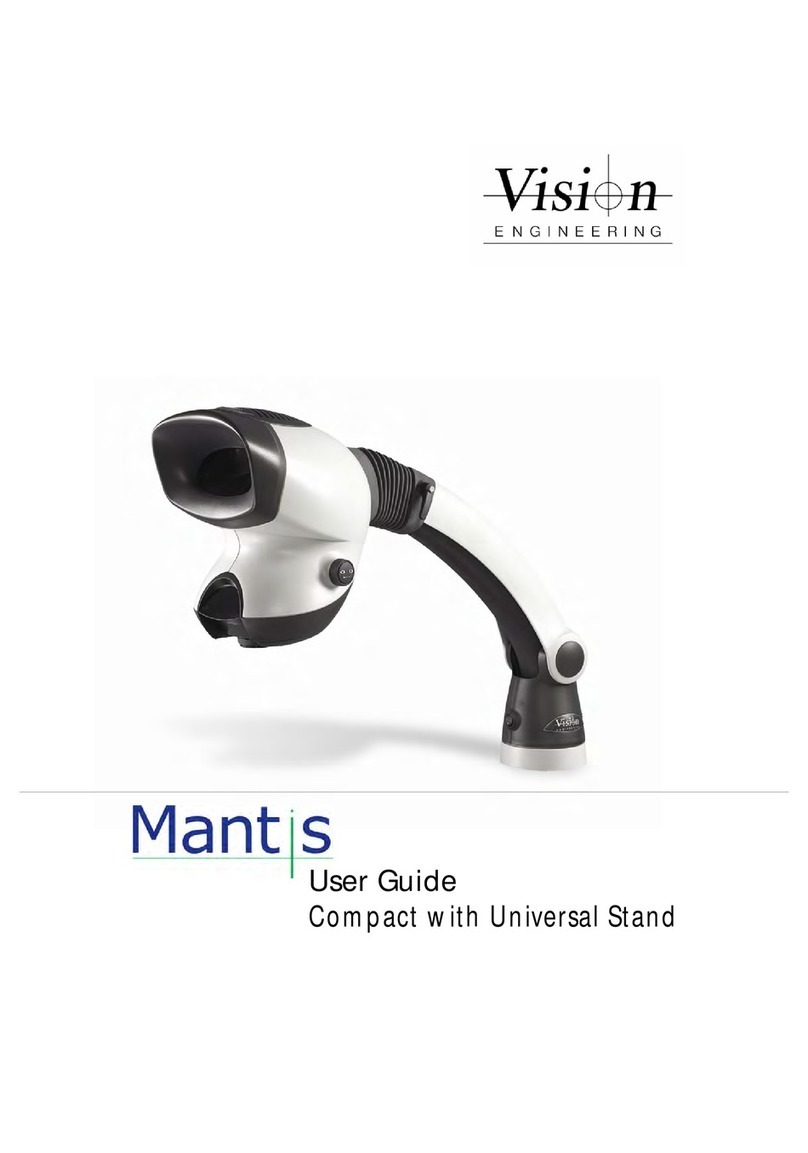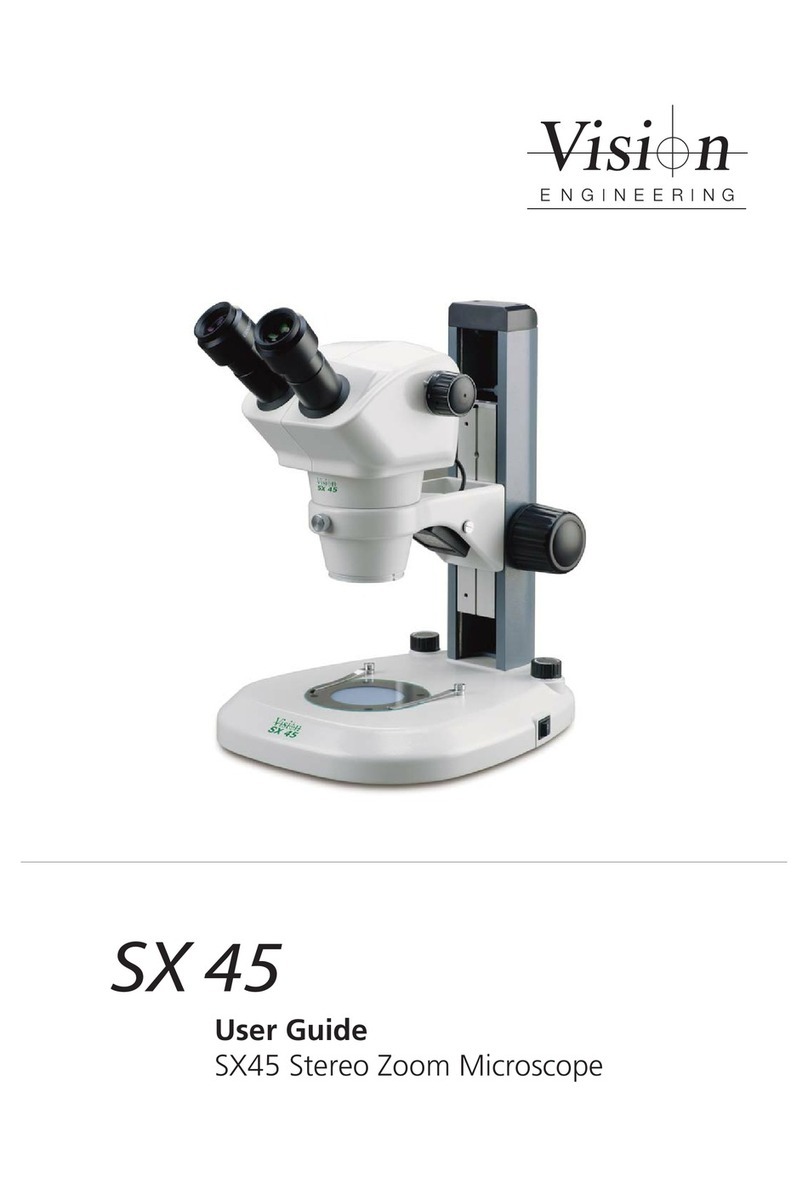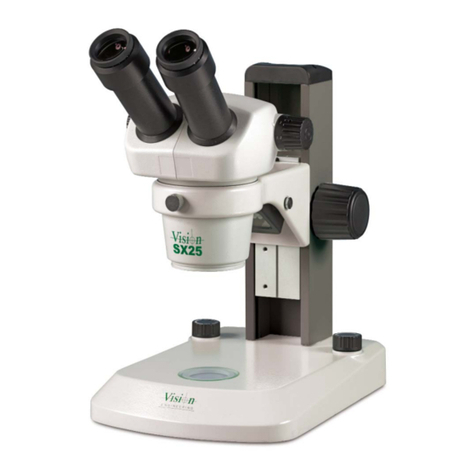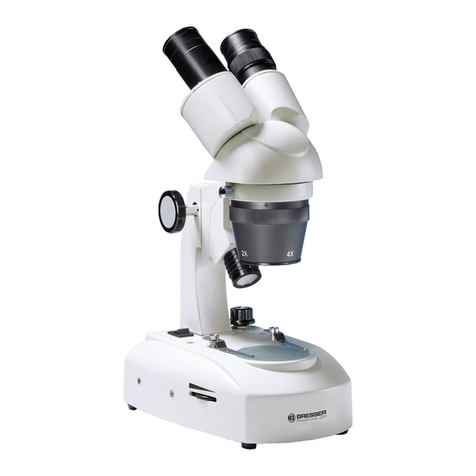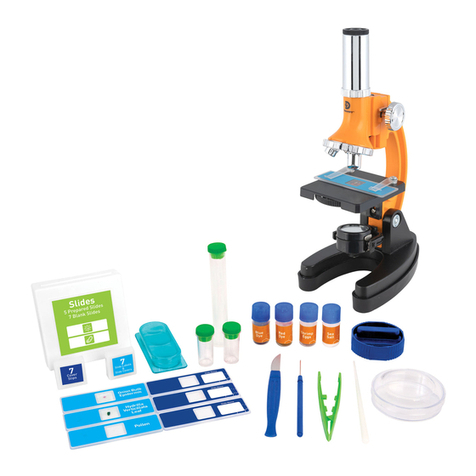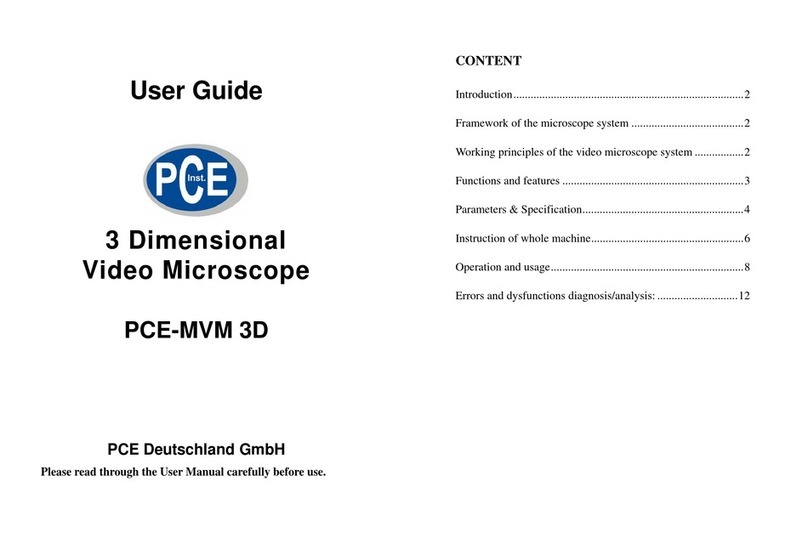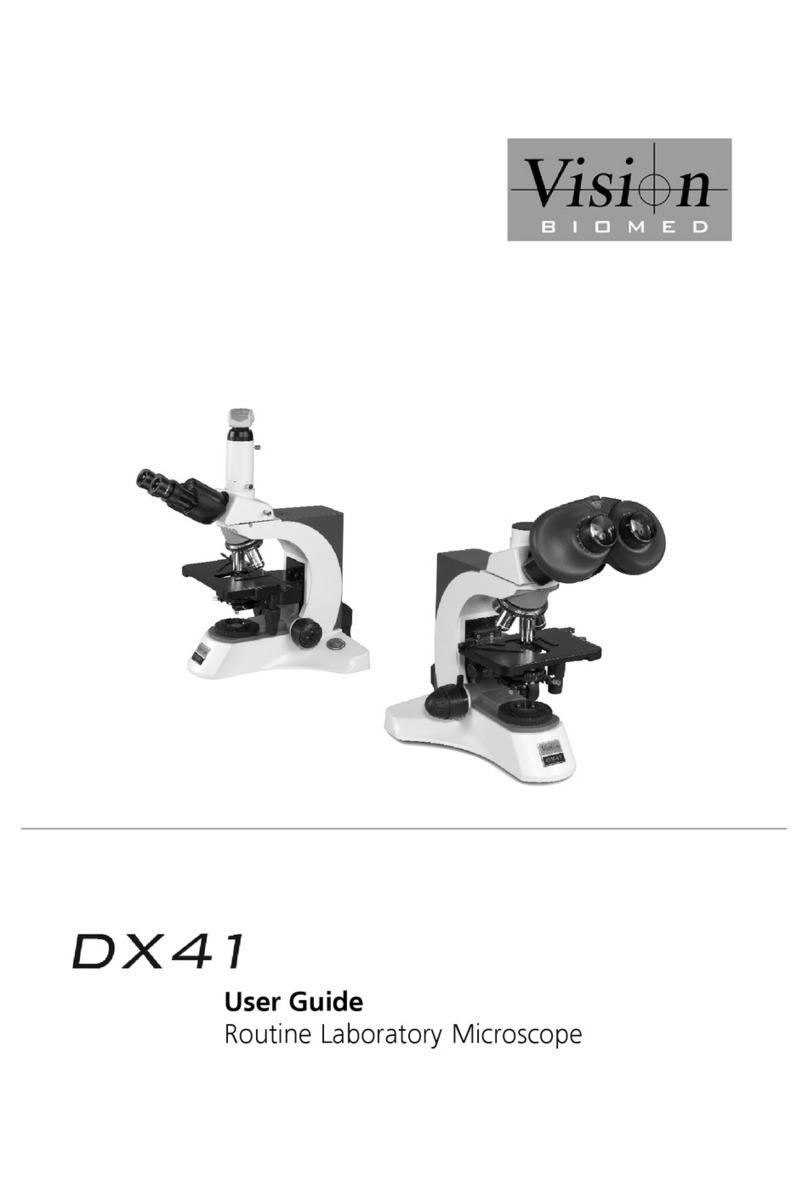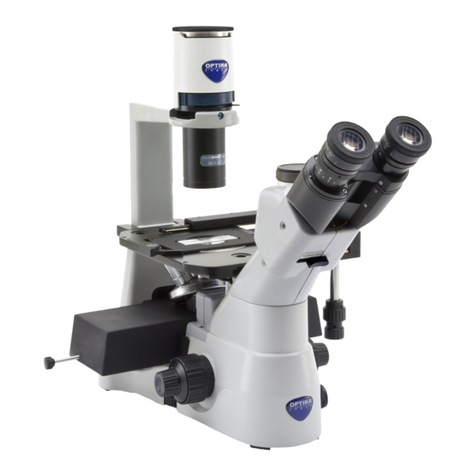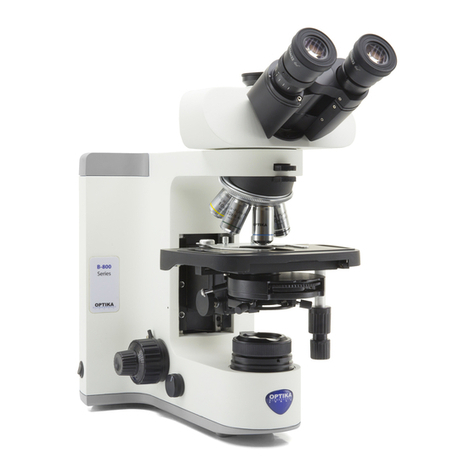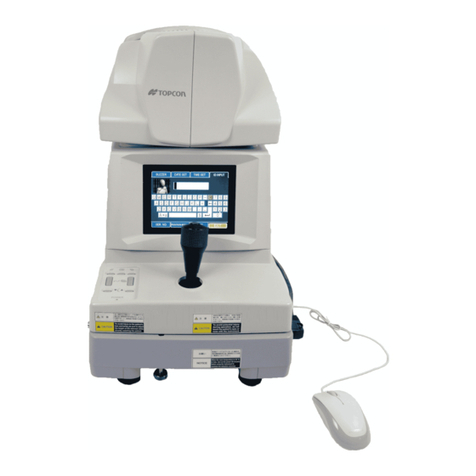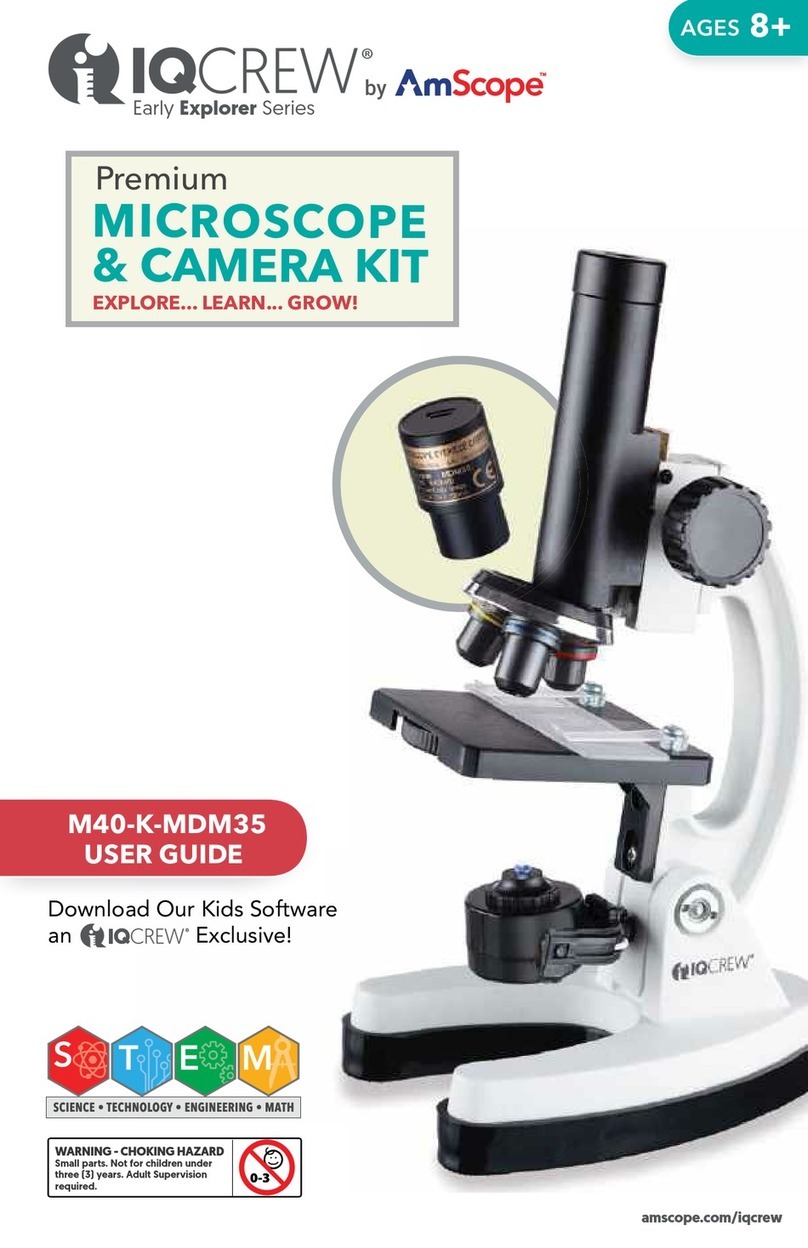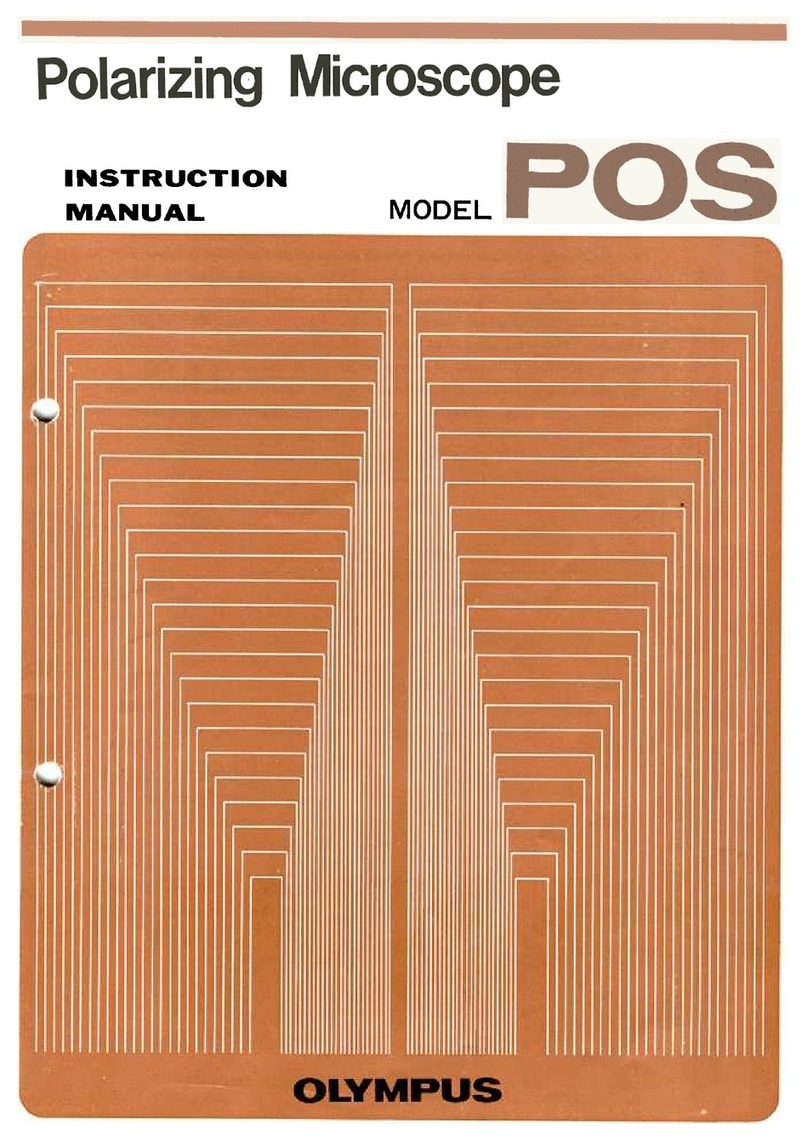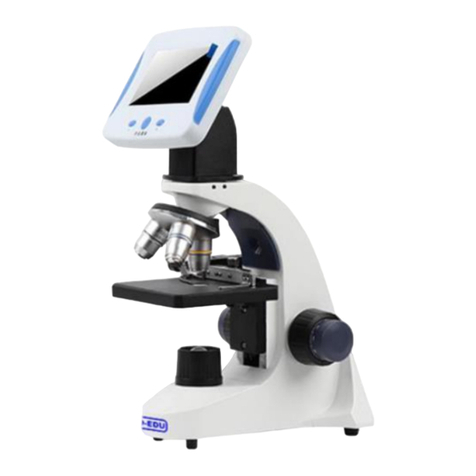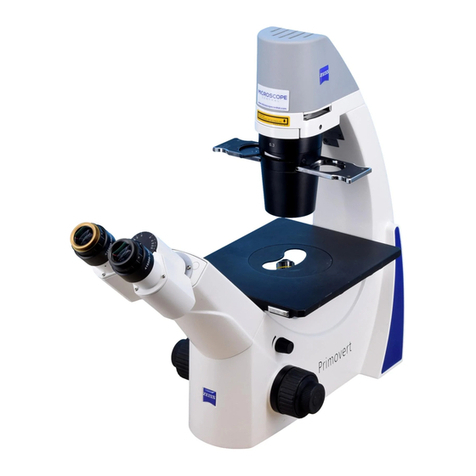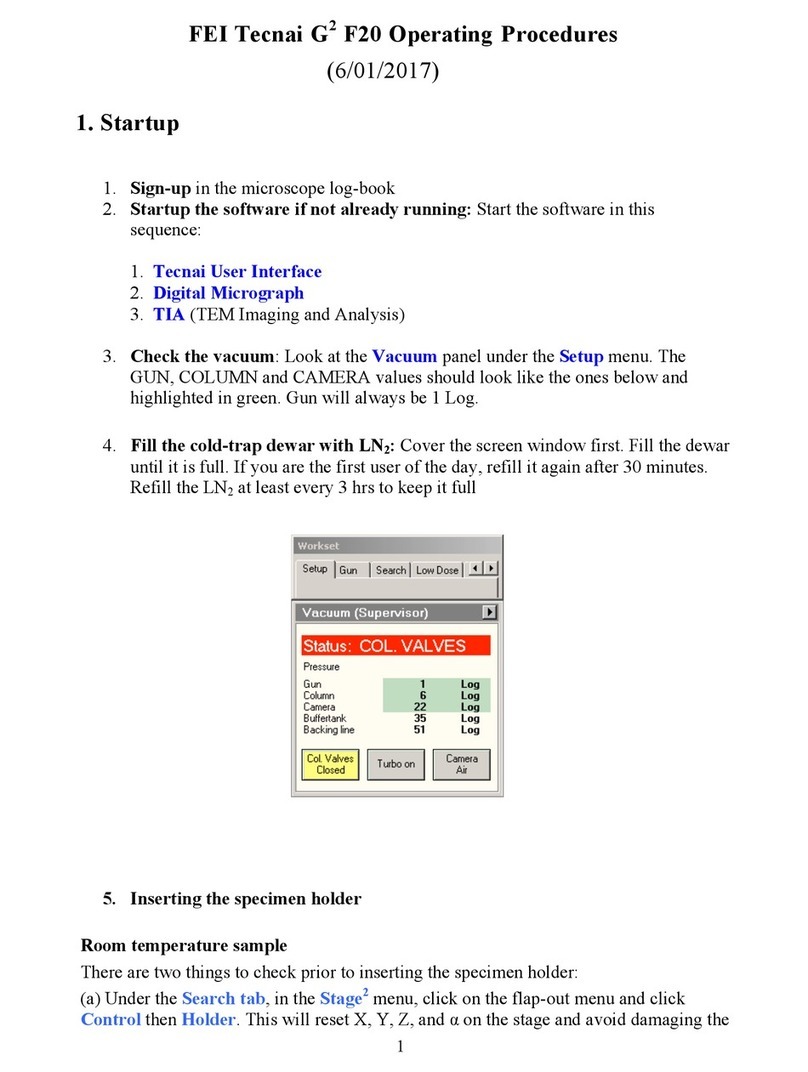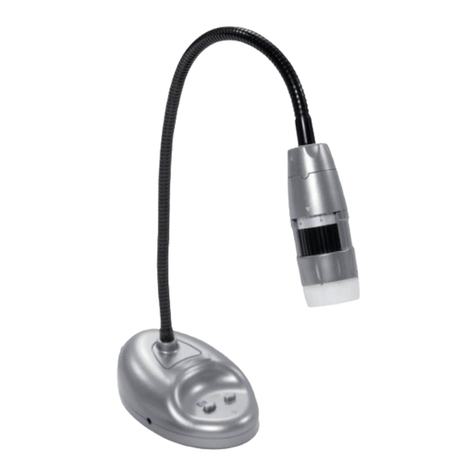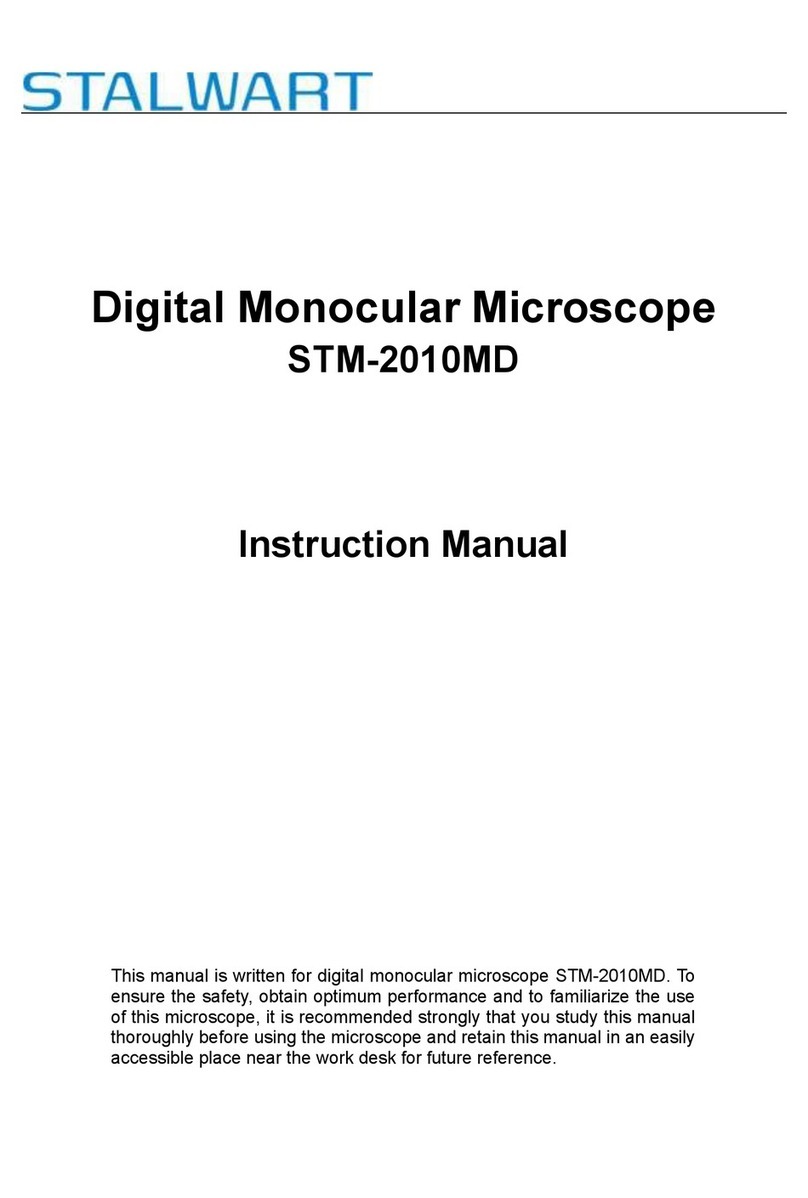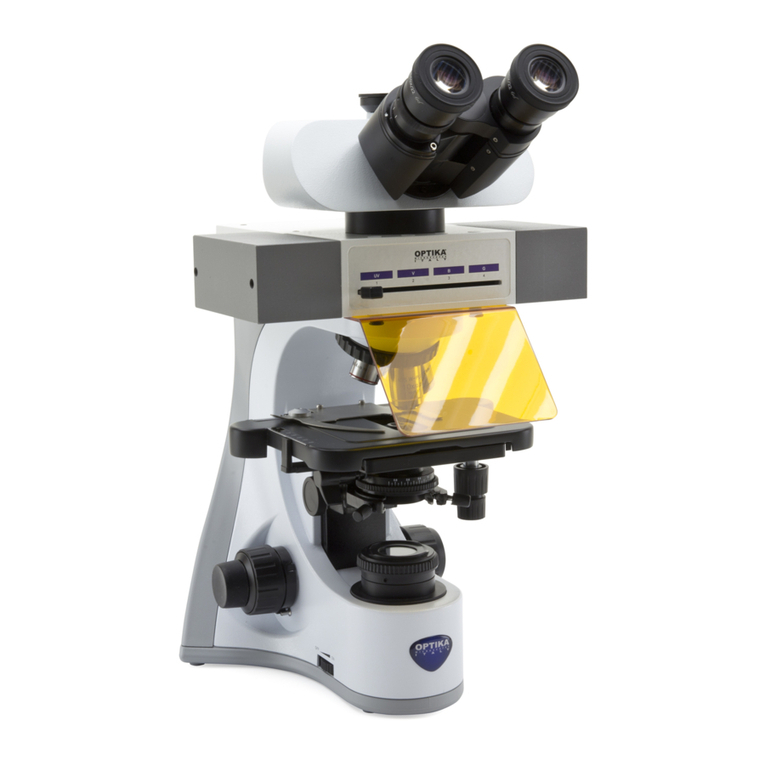
10
Turning the Power “ON”
Boom Mount (refer to page 3 of this manual)
There is one power switch for the Mantis boom mount system. It is located on the front panel of
the vertical support column. Flip the switch to energize the Mantis illuminator
FX Bench Stand (refer to page 4 of this manual)
There are three power switches for the Mantis FX bench stand system. The first is the main
power switch. It is located on the back of the bench stand vertical support. When energized the
switch is illuminated. The remaining power switches are on the front of the bench stand vertical
support. The upper switch powers the main illuminator incorporated in the Mantis viewing head.
The lower switch powers the substage illuminator built into the focusing platform.
Focusing
All of the Mantis objective lenses (except 2X) are parfocal. This means that the image stays in
focus when switching between objectives without re-focusing. For best results always focus
with the highest magnification lens, then switch to the lower magnification.
Boom Mount (refer to page 3 of this manual)
To focus the boom mount Mantis system move the Mantis viewing head “UP” or “DOWN”.
(Before moving the Mantis head always loosen the boom friction clamp lever located on the right
side of the boom mount pivot). To facilitate focusing there are 4 plastic lugs located on the
underside of the Mantis head. Hold one of the lugs between your thumb and index finger and
gently move the head until proper focus is obtained. Tighten the boom friction clamp.
FX Bench Stand (refer to page 4 of this manual)
To focus the FX bench stand locate the focus adjustment wheel on the front, right hand corner of
the bench stand base plate. Turning this wheel will move the focusing platform “UP” or
“DOWN”. With a subject on the focusing platform look into the viewing screen and turn the
focus adjustment wheel until a clear image is obtained.
Adjusting the Lighting
The main illuminator built into the Mantis viewing head features an adjustment to optimize lighting
for different applications. The illumination adjustment is a horizontal disc on the right side of the
Mantis viewing head. Rotate the disc while looking into the viewing screen until optimal lighting is
achieved.
4) Using the Mantis (con’t)




















